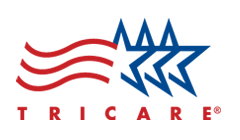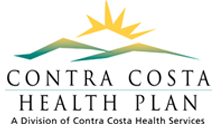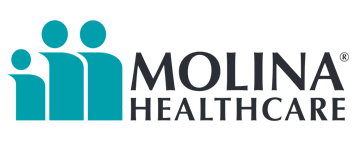Insurance Explained
This guide will help explain insurance coverage, common terminology and also give you a high level overview of steps involved.
If you still have questions, please reach out to an AGES Team member on 866-375-2437.
The Basics
In most cases, fully funded commercial insurance policies are required to provide meaningful ABA therapy coverage when an autism diagnosis is present. However, the amount of ABA therapy coverage, age limitations, plan limitations, vary from insurances.Within the same insurance payor, there are also differences between plans. For example, the patient or member responsibility (what you owe after insurance pays its part of the bill) varies depending on insurance plans.
Insurance Terms you need to be aware of
Understanding your plan including what’s covered , what your out of pocket cost is vital,below is a list of commonly used insurance terms and their definitions. When in doubt, call your provider’s Member Services number for clarification.
Insurance Premium: The monthly cost of your insurance plan, often shared between you and your employer.
Patient or member responsibility: Your share of the costs of the medical services received by the subscriber or dependents on the plan. The cost share and total member responsibility can differ based on whether your medical provider is in-network or out-of-network, so understand the variations on your plan.
Deductible: A deductible is the amount you pay each year before your health plan begins to share in the cost of covered services. Typically, insurance will not cover anything until you have met your entire deductible.
Co-pay: A flat daily or per-visit rate you pay, common for in-network services. Your cost-share portion of the medical claim is the copay, and your insurance plan covers the entire remainder of the claim.
Co-insurance: A variable cost-sharing structure more common for out-of-network services. Your cost-share portion of the medical claim is an equivalent or smaller percentage of the medical claim, and your insurance plan covers the remaining percentage. For example, if your plan has a 20% co-insurance, you are responsible for 20% of the allowed amount of the claim and your plan covers the remaining 80%.
Out-of-pocket maximum: The out-of-pocket maximum is the maximum dollar amount you could possibly owe for covered medical expenses each year. Once you have met your out-of-pocket maximum, insurance will cover everything thereafter at 100%.
In-network benefits: Your insurance provider likely has a network of participating providers with contracted reimbursement rates. Services from in-network providers are typically covered with a lower out-of-pocket cost for members than services received from out-of-network providers.
Note: Patient responsibility payments for in-network services typically do not apply to out-of-network benefits and vice versa.
Out-of-network benefits: Some insurance plans allow members the choice of any doctor or medical service provider, regardless of whether that provider has a contract with the plan. These providers are considered out-of-network. However, the cost share and out-of-pocket maximum for choosing an out-of-network provider are usually higher than choosing an in-network provider.
Notification of Benefits (NOB): Your notification of benefits is a summary of your plan benefits, which is available to you from your insurance plan. It outlines your member responsibility and cost-share, out-of-pocket maximum, and plan limitations.
Pre-authorization: Pre-authorization is required for a variety of services covered by your insurance plan. When pre-auth is required, your payro will review the documentation of medical necessity of a service or procedure before agreeing to cover it. ABA Therapy almost always requires pre-authorization.
Diagnostic Evaluations
Its mandatory to have a diagnostic report, the diagnostic evaluation must be conducted using a standardized evaluation tool, and the report must include which tool was used as well as the full results. The evaluation must be performed by an M.D. or Ph.D. who is qualified and trained to administer the evaluation. AGES doesn’t provide diagnostic service, you will need to have this done separately and submit us a copy of the report.
Pre-Authorization for ABA Therapy
Because of the intensive nature and expense of ABA therapy, most insurance plans require pre-authorization for your child’s initial ABA assessment, and another separate pre-authorization for ongoing therapy. The medical necessity documentation for the initial ABA Therapy assessment will include your child’s Comprehensive Diagnostic Evaluation from when the autism diagnosis was made, and possibly a referral or prescription for ABA Therapy. The medical necessity documentation necessary for the authorization for ongoing therapy includes the treatment plan that is written by the Board Certified Behavior Analyst (BCBA) after the initial assessment.
The pre-authorization process can be lengthy. Gathering the documentation needed for approval can be overwhelming and writing the initial treatment plan takes time. The speed of the approval process also varies greatly from plan to plan, ranging from a day to several weeks. We handle most of the work for your child’s pre-authorization; we verify benefits, submit the necessary documentation, and request and monitor the authorization requests. We challenge claim denials on your behalf & ensure you are covered as per the plan, we will reach out to you only when Insurance providers inform us that they need to speak to you on certain aspects.
Tips for Contacting Your Insurance Provider
When you call your insurance company’s member services line, it helps to know the terminology, and what to ask. Understanding your member responsibility and cost-share is only one component!
Know the Terminology
- Don’t only ask if Autism is a covered diagnosis, be sure to also ask if ABA Therapy is a covered benefit with an Autism diagnosis.
- Often plan limitations on other services are waived with an Autism Diagnosis.
Always double-check, Always Document
- Ensure you have clarified information regarding your benefits with more than one insurance representative.
You can protect yourself from misinformation by collecting the names and reference numbers of every representative you speak with, every time. Take notes on what you were told and save them. You can always refer to these notes should you ever get conflicting information, most insurance companies have call recording and its your right to get the accurate information always.
Self-educate on your Plan and benefits
- Even if you continue with the same plan, there are high chances that the plan benefits may have varied , so make sure you have verified the plan coverage & benefits and take appropriate actions if you need to change the plan. Variations in plan benefits could also disrupt your on-going treatment.
You could be financially responsible for any non-covered services.
















